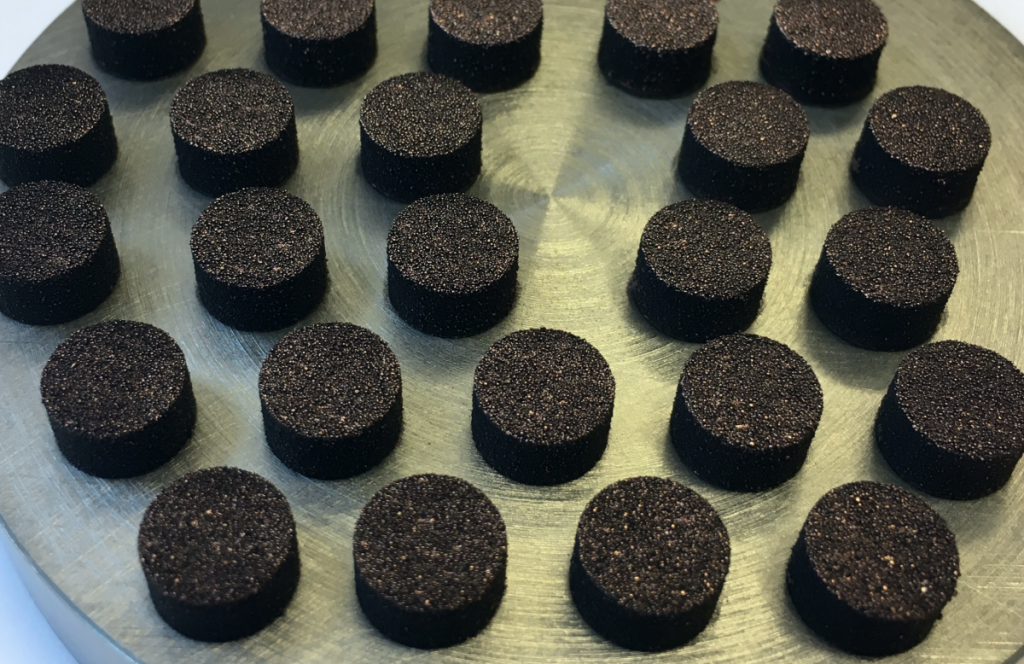A team of researchers from Uppsala University, together with graphene specialist Graphmatech, have made significant advances in the 3D printing of high-strength parts with copper powder.
Through the use of Graphmatech’s proprietary coating technology, the team was able to coat the outer surface of copper powder particulates with a graphene layer. Since graphene is comparatively darker, the coating reduced the reflectivity of the hybrid 3D printing powder, increasing its energy absorption levels drastically. When printed using a laser powder bed fusion (L-PBF) system, this was found to translate to higher part densities and improved mechanical properties.
Professor Ulf Jansson, whose research group led the study at the university’s Ångström Laboratory, states, “The new process developed to coat metal powder with graphene opens up very interesting perspectives for the design of new materials in various applications.”

The issue with highly reflective metals
Due to the optical nature of L-PBF, 3D printing with highly reflective metals such as pure copper can prove to be challenging. At the wavelengths commonly used in most industrial systems, much of the energy delivered by the laser is simply reflected rather than absorbed, which can result in pores and voids in printed parts where the powder has not entirely fused.
The excellent thermal conductivity of copper also makes it a great radiator, meaning printed parts tend to cool rapidly – so much so that there is a real issue with contraction-induced cracking post-build. This combination of factors makes copper and other similar metals largely unsuitable for laser-based 3D printing processes, at least in their pure form.
Dr Mamoun Taher, CEO of Graphmatech, explains, “By modifying the surface of the copper powder using Graphmatech’s patented graphene technology, we successfully reduced the reflectance by up to 67%. This 3D printable hybrid material has the potential to add value in a range of sectors such as e-mobility, electronics and defence.”
As well as improving the printability of the copper, the graphene coating survived the 3D printing process, meaning it further increased the density of the printed components while giving them a slick black sheen. When it came to non-mechanical properties, the graphene coating also helped with UV and corrosion protection, fire resistance, and durability. Having already worked with several project partners to develop coated powder composites for additive manufacturing, Graphmatech is now in the process of scaling up its patented technology.

Copper in the 3D printing industry
The characteristically red-brown material is defined by its excellent conductivity and ductility, making copper a prime choice for electrical wiring as well as thermal components such as heat exchangers. While laser-based 3D printing processes have largely been incompatible with the metal, extrusion-based FDM printing has seen a little more success.
Back in 2020, 3D printer manufacturer Markforged announced the release of its own pure copper filament option for use with the company’s Metal X 3D printer. According to the company, customers now have the potential of reducing lead times and part costs, compared to traditional manufacturing processes for manufacturing parts with the commonly used metal.
Elsewhere, materials developer Copper3D has previously 3D printed an antibacterial breastfeeding device made of the company’s proprietary PLACTIVE filament. The nano-copper-infused PLA was used as an interface between mother and child, inactivating the HIV found in contaminated breast milk.
Subscribe to the 3D Printing Industry newsletter for the latest news in additive manufacturing. You can also stay connected by following us on Twitter and liking us on Facebook.
Looking for a career in additive manufacturing? Visit 3D Printing Jobs for a selection of roles in the industry.
Featured image shows copper powder coated in graphene. Image via Uppsala University.



